Adding Machu Picchu to our itinerary intimidated me for a few reasons:
- Altitude sickness
- Lack of gear: my shoes include one pair of trainers, sandals, and Uggs.
- Lack of fitness (comparatively speaking)
Turns out, none of this was a big deal. Cusco is at about 11,150 ft high and Machu Picchu (MP) is 7,972 ft. After a week of acclimatizing in Cusco, Machu Picchu was totally fine! It’s such a developed site for tourists that there are plenty of clear pathways and my trainers were perfect for the day’s walking/hiking.
We left our apartment in Cusco at 2:30am, took a van ride to Ollantaytambo, and then took a 4.5 hour train to Aguas Calientes, the town at the base of MP. Another bus ride up the steep hill and we were at MP’s entrance well before 8am.
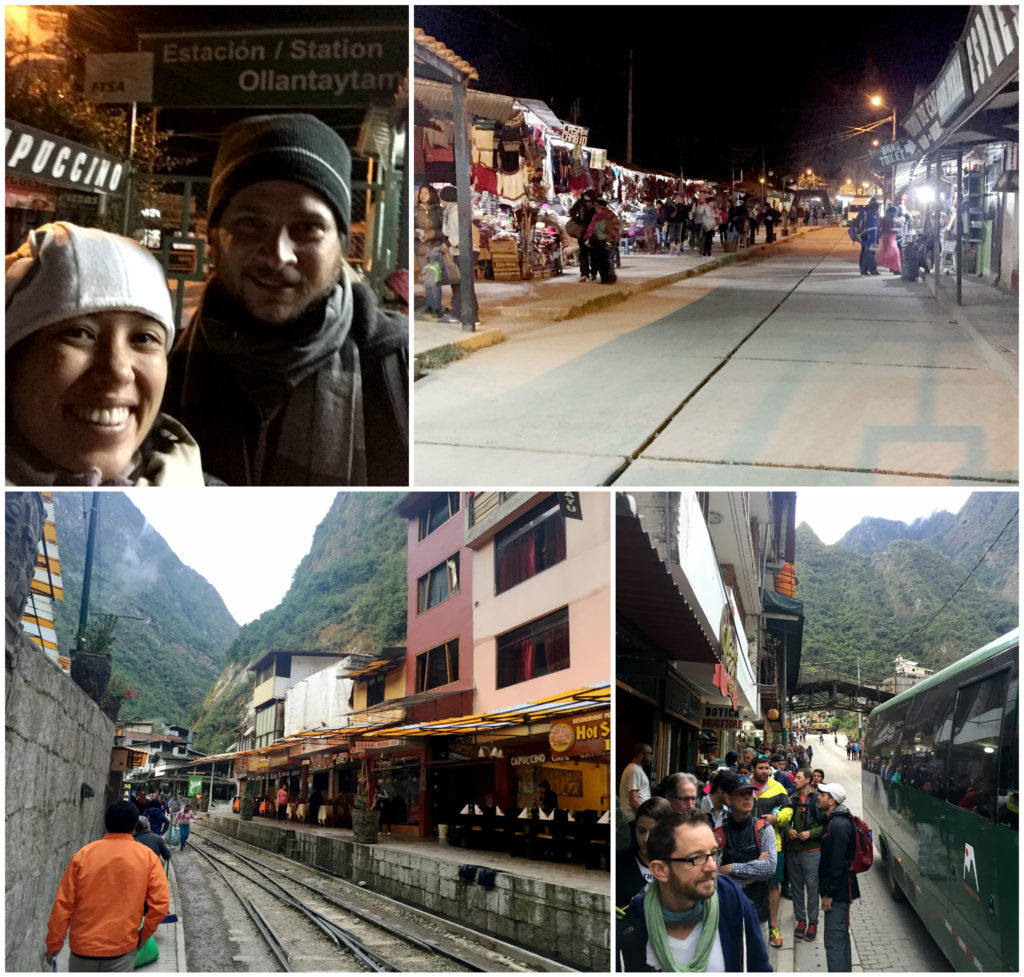
Our guide, a descendent of the Inca, gave us a quick history of Machu Picchu:
An Inca king had two sons, but they were half-brothers who didn’t see eye to eye. He had a vision that people would come on floating houses to destroy them, so he started construction of Machu Picchu in the mountains to save the Inca culture. He died 3 years before the Spanish arrived. Once he died, the brothers fought amongst each other for power causing a civil war. Once the Spanish arrived, one brother decided to approach them to create an alliance in order to kill his brother who was in Cuzco (and he promised the Spanish all the gold there).
We know today that the Inca civilization didn’t survive intact due to the conquistadors but the Spanish never made it to Machu Picchu. The furthest they made it to was Ollantaytambo (where we boarded the train), but they could not pass this Inca stronghold of rocks and potatoes thrown at them.
The Inca never finished Machu Picchu. Historians speculate that they abandoned Machu Picchu because of a malaria epidemic. With all the bodies found, particularly as they were concentrated in some of the structures, they think MP was in it’s last breaths as the Inca tried to find the cure in the Amazon, a hypothesis based on all the herbs and medicinal items left behind. In homage to the Inca, the Peruvian flag has three symbols: the cinchona tree (plant where quinine comes from, which is used to treat malaria), the vicuña (a rarer relative of the llama and alpaca), and a cornucopia of gold.
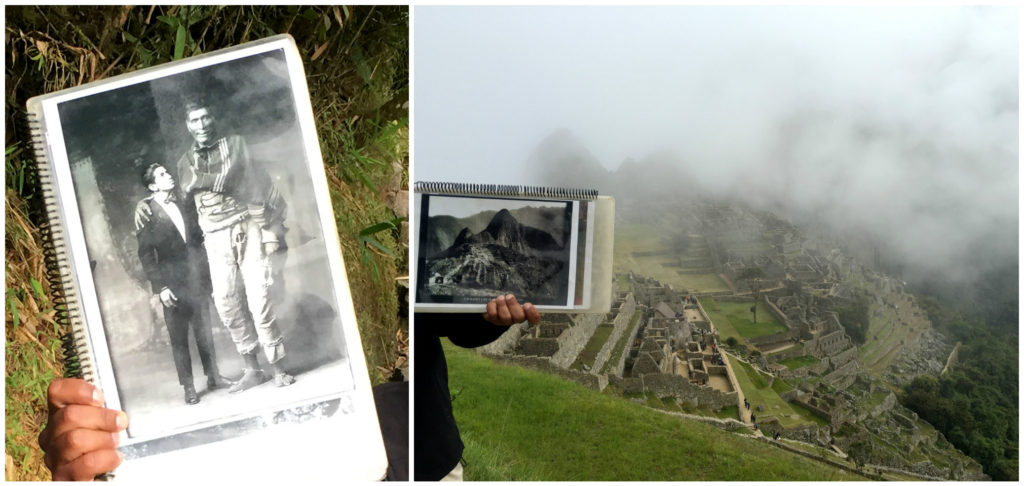
Our guide then took us through all of the sites within Machu Picchu, explaining a bit more about Inca culture as we went along. He told us that the mountains behind the ruins are meant to create the silhouette of an Inca face if turned 90 degrees counter clockwise (can you see it?).
Hiram Bingham brought National Geographic’s and the world’s attention to Machu Picchu, but locals had always known it was an important site. Pablito was a local boy who guided Hiram Bingham to this site. Bingham took a few pics, went back to the US for funding, and returned on an expedition.
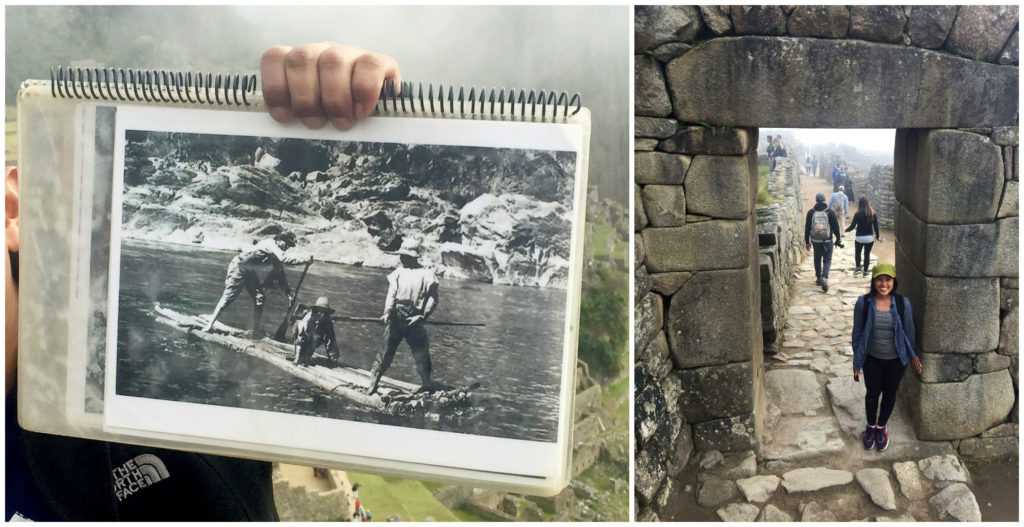
Machu Picchu was built out of the mountain, dug out and shaped with stones. The Inca were fantastic farmers building 185 terraces, each with its own microclimate. The Inca transported soil from all over to help shape these microclimates allowing them to farm all sorts of products from coca leaves to hundreds of potatoes.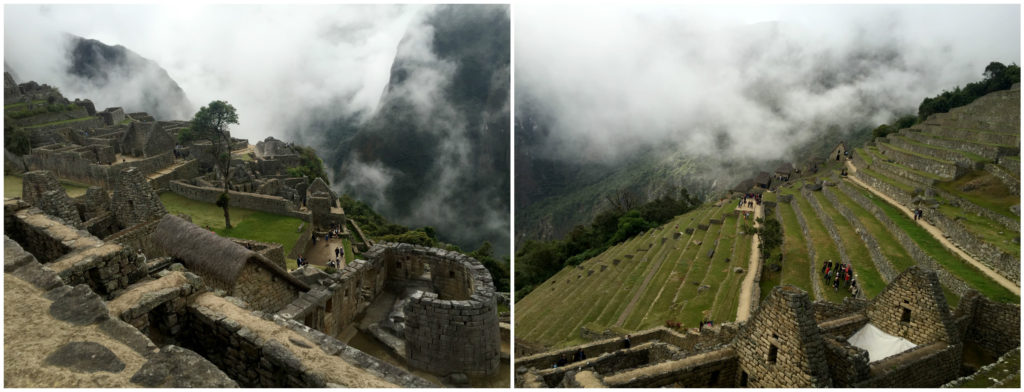
Our guide told us about 55% of MP is visible and that the Peruvian government’s goal is to have the whole site excavated and restored in the next 5 years, an ambitious goal. All of the pottery found on Bingham’s expedition was removed and now sits in Smithsonian museums in the US. They even tried to remove an altar that is aligned with the sun and the sun gate, as well as celestial mirrors that are aligned with alpha and beta centauri.

Thankfully, despite scars from attempted removal, these pieces are here to stay; they cannot be removed because they are part of the mountain! In past times, you could touch the altar, however it’s now roped off and a park ranger sits watching it. Starting in 2017 you won’t be able to walk up to this area because the ground is eroding. In Inca times, only about 3 people were ever allowed up here (the emperor and chief priests) compared to today’s thousands of visitors to MP each day.
The sun dial spot was also a place of great acoustics and the Inca emperor could stand here and address his people. Check out this video of the acoustics from across the way, looking up at the wall the sun dial sits behind.
Llamas and guinea pigs roam freely here, though we only got to glimpse llamas. The Inca were a vegetarian group, eating guinea pig and sacrificing llamas only on special occasions such as the solstices.
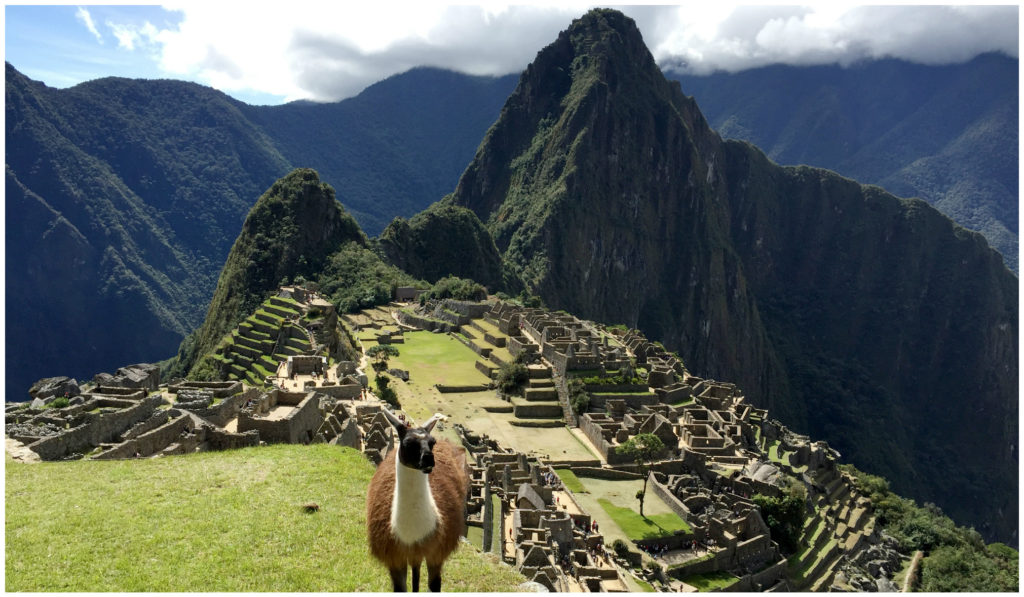
They were also a meritocracy. There was an upper class and a lower class, but you were not born into them. Rather, after about 14 years of schooling you were judged to be fit for upper class (the knowledgeable ones) or lower class (the ones with agricultural priorities), regardless of the class of anyone in your family.
Three was a mystical number for the Inca. Many of the important buildings here had 3 windows. The Incas worldview consisted of 3 levels each represented by an animal: the underworld/snake, the earth/puma, and the upperworld/condor.

The Inca civilization had 3 main rules:
- Don’t lie
- Don’t steal
- Don’t be lazy
Pretty simple stuff. If you broke any of these, your punishment was to work on the Inca trail. If you killed someone, you were taken to a tall mountain and pushed off(!).
After the tour, we hiked up Machu Picchu mountain. Although optional, you must plan ahead for it and purchase your entrance to the park with this hike included because only 400 people are allowed each day (same for Huayna Picchu, the shorter, but more popular hike).
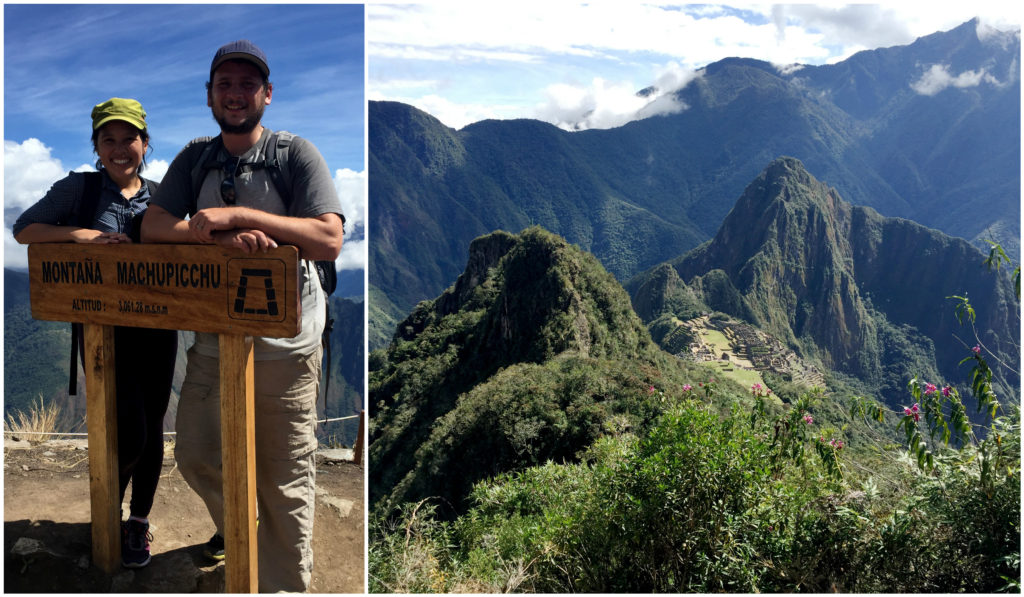
If you aren’t looking to hike up MP mountain or Huayna Picchu, you can hike to the Sun Gate (90 minutes) and/or see the Inca bridge (half an hour walk total).

For us, one day was the perfect amount of time to visit Machu Picchu (sans Inca trail).
Logistics:
If you’re not hiking the Inca trail, you can choose to take a train from one of two stations, Poroy is in Cusco city, but is more expensive. More commonly, folks go from Ollantaytambo, about 1 hour and 45 minutes outside of Cusco.
You can choose to walk up the steep hill from Aguas Calientes to Machu Picchu, but the $12USD bus ticket is well worth your time and effort.
There are two main seasons here: the rainy season and winter. Dress appropriately (layers!).
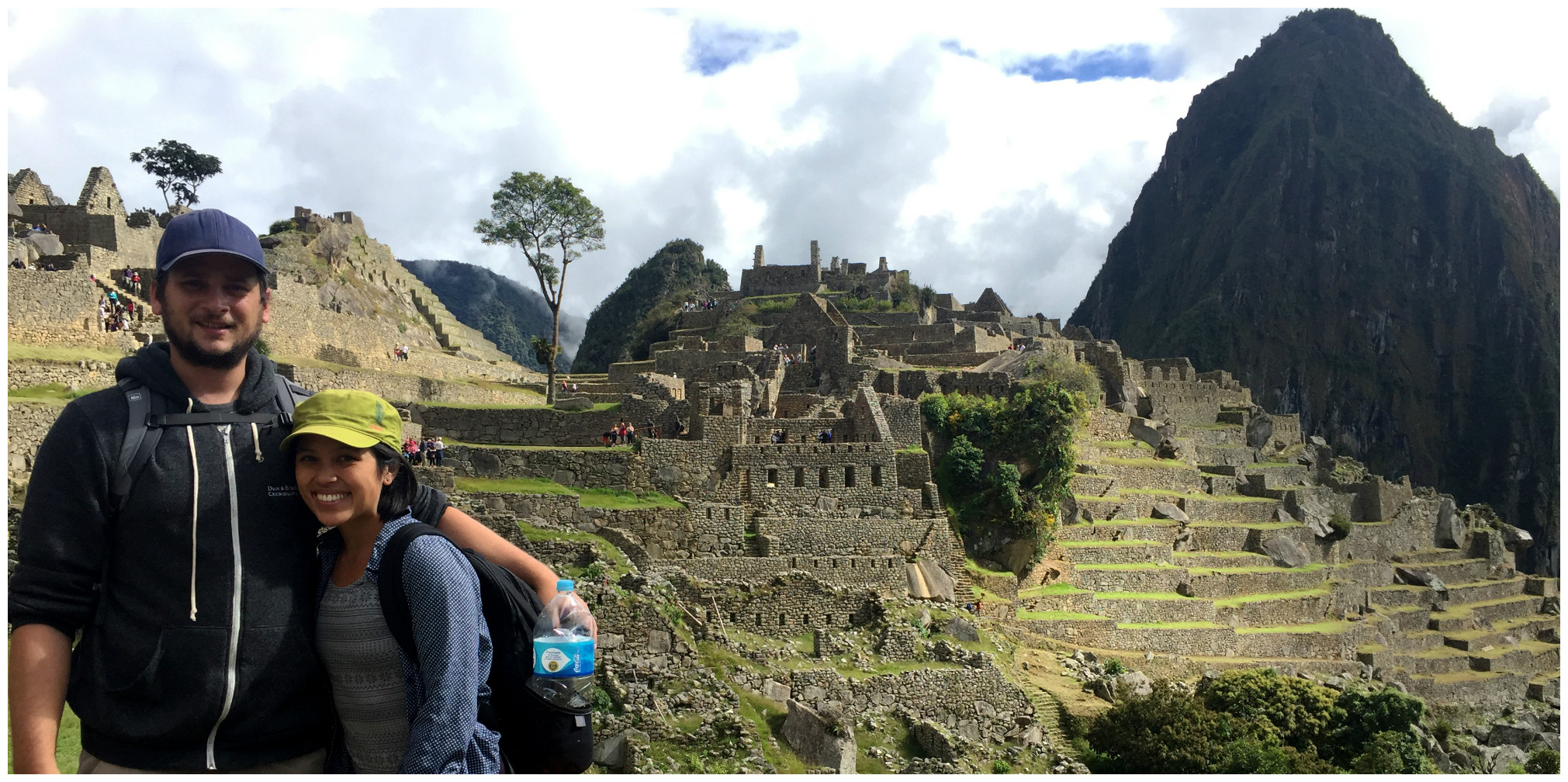
What a wonderful experience and the knowledge you are getting is great. The picture and sites you are sharing with us is priceless .
Love all the photos! Awesome you got to visit! Llama and Machu Pichu is a gem shot! Didn’t realize the exact altitude is surpassed by the highest road elevation at Mesa Verde NP (8,000’+). Truly a bucket list destination!